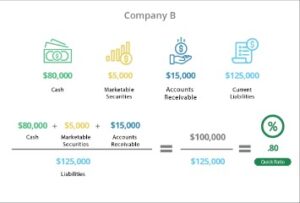
Now that we know how to prepare for the reconciliation process let’s begin our guide that will walk you through the steps to efficiently reconcile your accounts in QuickBooks Online (QBO). For those new to QuickBooks or reconciliation, the process might seem daunting at first. However, with consistent practice and attention to detail, it becomes a manageable and integral part of your financial routine. Should you encounter complex issues, don’t hesitate to seek guidance from QuickBooks resources or consult with accounting professionals. Adjusting entries may be necessary to correct these discrepancies, particularly in cases of bank errors or charges and fees not recorded in QuickBooks.
- Reconciling a bank account in QuickBooks Desktop involves a series of structured procedures to ensure the accurate alignment of the financial records with the bank statement, reflecting the precise financial position.
- If you would like to streamline your reconciliation process in QuickBooks, Synder is the answer.
- It is crucial to ensure that all the transactions listed on the bank statement are accurately recorded in QuickBooks to maintain an accurate representation of the company’s financial status.
- After confirming the match between the records and the bank statement, it is essential to review any discrepancies and make necessary adjustments.
- The significance of this phase lies in its ability to identify any discrepancies or errors, providing a clear overview of the company’s financial status.
Reconcile an account in QuickBooks Desktop
This process is crucial for ensuring the financial integrity of a business. To start, you will compare the transactions recorded in QuickBooks Online with those shown on the corresponding bank statement, ensuring that they align. This step also streamlines the reconciliation process, allowing for a more efficient and error-free comparison between the company’s records and the bank statement. Marking transactions as cleared in QuickBooks Desktop enhances the overall accuracy and reliability of financial reconciliations. Reconciling in QuickBooks Desktop involves a set of structured procedures to ensure that the financial records accurately correspond with the bank statement, reflecting the billable hours precise financial position of the business.

Step 3: Start your reconciliation
By regularly reconciling your accounts with your bank and credit card statements, you ensure the integrity of your financial data, enabling informed decision-making for your business. The next step is to identify any discrepancies between these two sets of records, which could be due to errors, omitted entries, or timing differences in recognizing transactions. Once these discrepancies are identified, they need to be thoroughly investigated. For instance, if a check issued by the company has not been cashed, it would show up in the company’s records but not on the bank statement. Rereconciling in QuickBooks involves the process of reviewing and revalidating previous reconciliations to address any discrepancies or updates in the financial records, ensuring ongoing accuracy.
How to Reconcile in QuickBooks Online and QuickBooks Desktop: Account Reconciliations in QuickBooks
The reconciliation process is concluded by affirming that the closing balances match, signifying the successful alignment of the financial records with the official bank statements. This finalization stage is vital for ensuring the accuracy and integrity of the financial data, providing a clear overview of the company’s financial position and allowing for informed decision-making. Accessing the reconcile window in QuickBooks Desktop is the initial step in the reconciliation process, enabling users to match the financial records with the bank statement and ensure accuracy. Entering the ending balance in QuickBooks Online is a crucial step in the reconciliation process, ensuring that the financial records align with the closing balance of the bank statement. When you reconcile, you compare two related accounts make sure everything is accurate and matches.
This process involves checking that all income and sales are correctly entered and categorized. Additionally, verify that all expenses, including bills, receipts, and cash transactions, are up to date. This process streamlines the reconciliation process, allowing for a seamless comparison between the company’s internal records and the bank’s official statement, thereby promoting financial accuracy and transparency. This phase is crucial as it ensures accuracy and integrity in financial reporting, aiding in identifying any discrepancies or errors that need to be resolved before finalizing the reconciliation process. Sign up for Synder today or book a seat at a Weekly Public Demo to experience firsthand how Synder automates bookkeeping and accounting tasks for online transactions. Input the Ending Balance from what is an accrual difference between acrrual accounting and cash accounting your bank statement and include any service charges and interest details, avoiding duplication of previously entered data in QuickBooks Desktop.
For small discrepancies, consider creating a reconciliation discrepancy account to track them. However, for more significant issues, it may be advisable to redo the reconciliation for the affected period, which could be a complex task requiring consultation with an accounting professional. Keep a record of all changes made for future reference and potential audits. Match each transaction listed in your bank statement with those in QuickBooks Desktop. In the Reconciliation window of QuickBooks Desktop, mark off each transaction that aligns with your bank statement.
Enter the Ending Balance
To correct transactions that have already been reconciled, locate the transaction in question and remove the reconciliation marker, such as a checkmark, to un-reconcile it. Then, make the necessary changes to ensure the transaction details accurately reflect the actual transaction. When handling discrepancies between QuickBooks and your bank statements, start by comparing each transaction in QuickBooks against the bank statements to spot any differences. Marking transactions as cleared in QuickBooks Desktop signifies the validation of these transactions against the bank statement, contributing to the accuracy of the reconciliation process.
Just like balancing your checkbook, you need to do this review in QuickBooks. You should reconcile your bank and credit card accounts in QuickBooks frequently to make sure tips for finding the right tax accountant they match your real-life bank accounts. Account reconciliation in QuickBooks is a pivotal task for maintaining accurate and reliable financial records. This guide has walked you through the essential steps of the reconciliation process, from preparing your documents to troubleshooting common issues.
In your first reconciliation, ensure that the opening balance in QuickBooks Desktop is in sync with the balance of your real-life bank account as of your chosen start date. For non-connected accounts, you follow the same path however, reconciliation requires manual entry and matching of transactions. When choosing an account to reconcile, ensure it corresponds with the one on your statement. It’s crucial to verify that the beginning balance in QuickBooks Online matches the one in your statement, and any discrepancies should be investigated and rectified.
